- Harmful if eaten/skin irritant
-
Out of stock
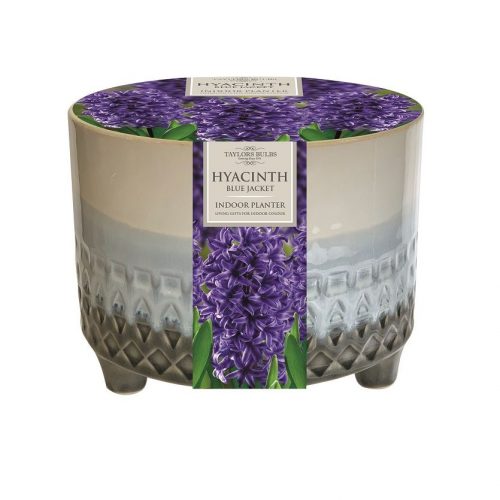 Glazed ceramic planter, bulbs, compost and growing culturals. Dimensions 17cm x 13cm Contains 3 x Hyacinth Blue Jacket Bulbs Indoor growing intructions: Plant from August onwards, by emptying two thirds of the compost into the planter. Then place the bulbs on top (pointy side uppermost) and cover them with the remaining compost, firming it down gently. Water sparingly so the compost is just moist, but be careful not to overwater. Place the planter in a bright position and try to maintain temperatures around 18-20C. Once in flower, move the planter to a cool, bright room to help prolong the display. Turn the hedgehog occasionally, and keep the compost moist but not waterlogged at all times. When the flowers have finished blooming, the bulbs can be planted outside in the garden.
Glazed ceramic planter, bulbs, compost and growing culturals. Dimensions 17cm x 13cm Contains 3 x Hyacinth Blue Jacket Bulbs Indoor growing intructions: Plant from August onwards, by emptying two thirds of the compost into the planter. Then place the bulbs on top (pointy side uppermost) and cover them with the remaining compost, firming it down gently. Water sparingly so the compost is just moist, but be careful not to overwater. Place the planter in a bright position and try to maintain temperatures around 18-20C. Once in flower, move the planter to a cool, bright room to help prolong the display. Turn the hedgehog occasionally, and keep the compost moist but not waterlogged at all times. When the flowers have finished blooming, the bulbs can be planted outside in the garden. -
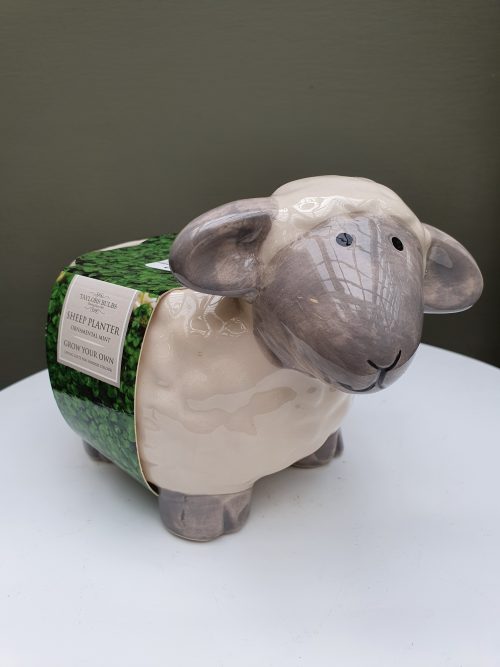 Sheep shaped ceramic planter with seeds, compost and growing culturals. Contains 1 x packet miniature mint seeds Indoor growing intructions: Plant from August onwards, by emptying two thirds of the compost into the planter. Then place the bulbs on top (pointy side uppermost) and cover them with the remaining compost, firming it down gently. Water sparingly so the compost is just moist, but be careful not to overwater. Place the planter in a bright position and try to maintain temperatures around 18-20C. Once in flower, move the planter to a cool, bright room to help prolong the display. Turn the hedgehog occasionally, and keep the compost moist but not waterlogged at all times. When the flowers have finished blooming, the bulbs can be planted outside in the garden.
Sheep shaped ceramic planter with seeds, compost and growing culturals. Contains 1 x packet miniature mint seeds Indoor growing intructions: Plant from August onwards, by emptying two thirds of the compost into the planter. Then place the bulbs on top (pointy side uppermost) and cover them with the remaining compost, firming it down gently. Water sparingly so the compost is just moist, but be careful not to overwater. Place the planter in a bright position and try to maintain temperatures around 18-20C. Once in flower, move the planter to a cool, bright room to help prolong the display. Turn the hedgehog occasionally, and keep the compost moist but not waterlogged at all times. When the flowers have finished blooming, the bulbs can be planted outside in the garden.- Harmful if eaten/skin irritant
-
Out of stock
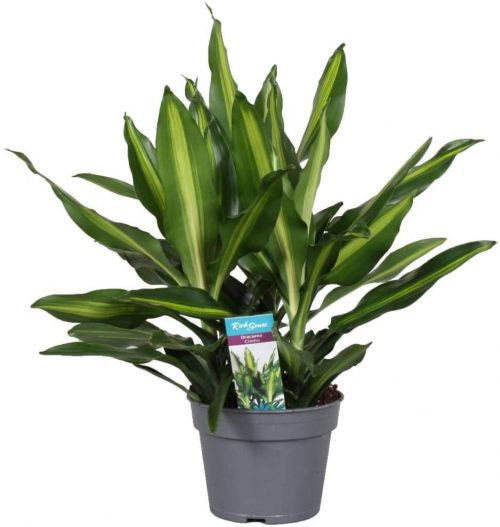
- The Dracaena is ideally suited for a shade in the room or office, rather than direct sunlight. In general, the darker the leaves all the more shadow can endure the plant. ~ 50cm in height
-
Out of stock
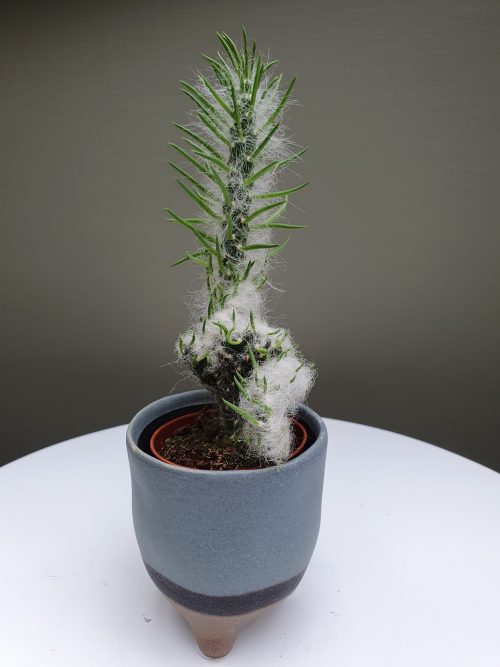
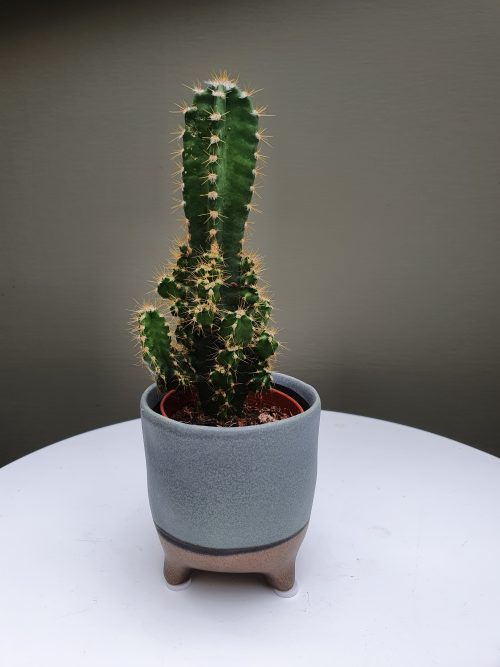 Cacti are now a very common houseplant. They come in a vast range of shapes and sizes from the petite to the grand.To care for a cactus plant, it is best to try to recreate their natural habitat. How to Care • Light Cacti thrive with good light sources, and it is best to place them in a bright place. A south facing position will provide good sunlight. However, be careful to not put them in direct sunlight because the intense light can make the plants turn a yellow colour. • Watering If your container has drainage holes, water thoroughly once a week during active growth period. If your container does not have drainage holes, water sparingly to moisten soil but be sure water does not pool up at the bottom of container which can cause rotting. Allow soil to dry between waterings. • Soil Cacti ike soil that is well aerated and fast draining. Perlite or pumice mixed with soil work well for this, or you can pick up cactus/succulent mix. • Fertilizer Fertilize during growing season with a 10-10-10 fertilizer diluted to 1/4 strength each watering. • Re-Potting If your cacti is pot-bound, then the best time to re-pot is in the spring. • Propagation Cacti have many methods for reproduction and can propagate from cuttings, leaf cuttings and producing pups and seeds.
Cacti are now a very common houseplant. They come in a vast range of shapes and sizes from the petite to the grand.To care for a cactus plant, it is best to try to recreate their natural habitat. How to Care • Light Cacti thrive with good light sources, and it is best to place them in a bright place. A south facing position will provide good sunlight. However, be careful to not put them in direct sunlight because the intense light can make the plants turn a yellow colour. • Watering If your container has drainage holes, water thoroughly once a week during active growth period. If your container does not have drainage holes, water sparingly to moisten soil but be sure water does not pool up at the bottom of container which can cause rotting. Allow soil to dry between waterings. • Soil Cacti ike soil that is well aerated and fast draining. Perlite or pumice mixed with soil work well for this, or you can pick up cactus/succulent mix. • Fertilizer Fertilize during growing season with a 10-10-10 fertilizer diluted to 1/4 strength each watering. • Re-Potting If your cacti is pot-bound, then the best time to re-pot is in the spring. • Propagation Cacti have many methods for reproduction and can propagate from cuttings, leaf cuttings and producing pups and seeds. -
Out of stock
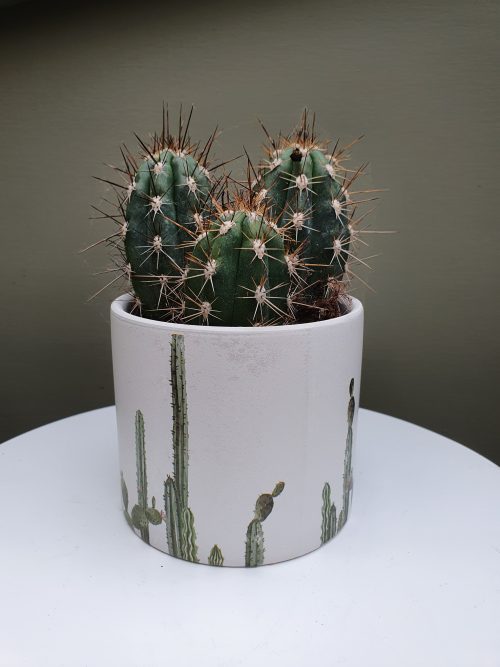 Cacti are now a very common houseplant. They come in a vast range of shapes and sizes from the petite to the grand.To care for a cactus plant, it is best to try to recreate their natural habitat. How to Care • Light Cacti thrive with good light sources, and it is best to place them in a bright place. A south facing position will provide good sunlight. However, be careful to not put them in direct sunlight because the intense light can make the plants turn a yellow colour. • Watering If your container has drainage holes, water thoroughly once a week during active growth period. If your container does not have drainage holes, water sparingly to moisten soil but be sure water does not pool up at the bottom of container which can cause rotting. Allow soil to dry between waterings. • Soil Cacti ike soil that is well aerated and fast draining. Perlite or pumice mixed with soil work well for this, or you can pick up cactus/succulent mix. • Fertilizer Fertilize during growing season with a 10-10-10 fertilizer diluted to 1/4 strength each watering. • Re-Potting If your cacti is pot-bound, then the best time to re-pot is in the spring. • Propagation Cacti have many methods for reproduction and can propagate from cuttings, leaf cuttings and producing pups and seeds.
Cacti are now a very common houseplant. They come in a vast range of shapes and sizes from the petite to the grand.To care for a cactus plant, it is best to try to recreate their natural habitat. How to Care • Light Cacti thrive with good light sources, and it is best to place them in a bright place. A south facing position will provide good sunlight. However, be careful to not put them in direct sunlight because the intense light can make the plants turn a yellow colour. • Watering If your container has drainage holes, water thoroughly once a week during active growth period. If your container does not have drainage holes, water sparingly to moisten soil but be sure water does not pool up at the bottom of container which can cause rotting. Allow soil to dry between waterings. • Soil Cacti ike soil that is well aerated and fast draining. Perlite or pumice mixed with soil work well for this, or you can pick up cactus/succulent mix. • Fertilizer Fertilize during growing season with a 10-10-10 fertilizer diluted to 1/4 strength each watering. • Re-Potting If your cacti is pot-bound, then the best time to re-pot is in the spring. • Propagation Cacti have many methods for reproduction and can propagate from cuttings, leaf cuttings and producing pups and seeds. -
Out of stock
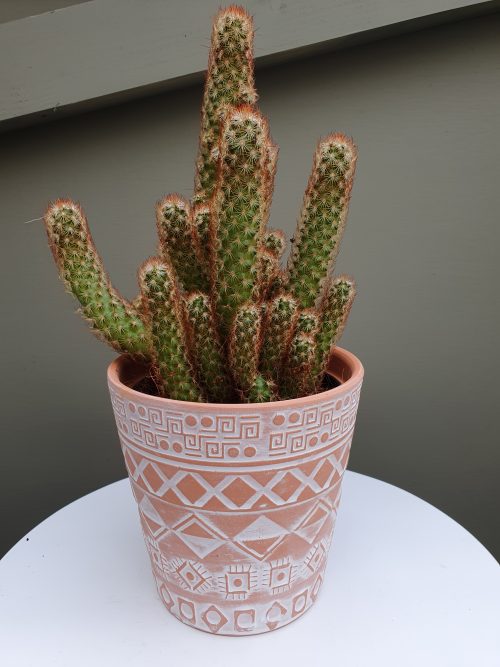
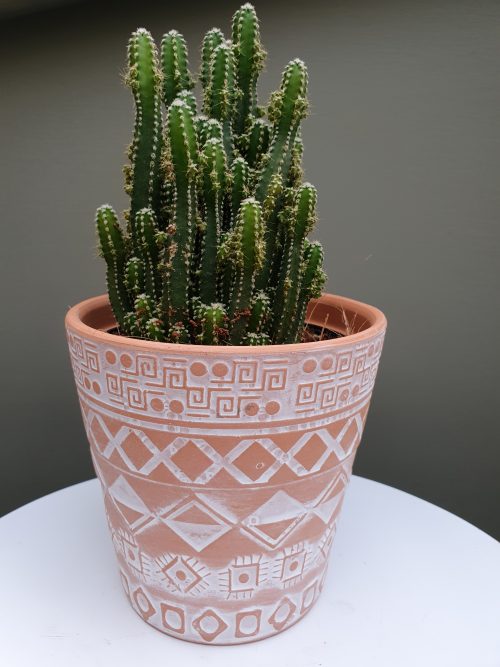 Cacti are now a very common houseplant. They come in a vast range of shapes and sizes from the petite to the grand.To care for a cactus plant, it is best to try to recreate their natural habitat. How to Care • Light Cacti thrive with good light sources, and it is best to place them in a bright place. A south facing position will provide good sunlight. However, be careful to not put them in direct sunlight because the intense light can make the plants turn a yellow colour. • Watering If your container has drainage holes, water thoroughly once a week during active growth period. If your container does not have drainage holes, water sparingly to moisten soil but be sure water does not pool up at the bottom of container which can cause rotting. Allow soil to dry between waterings. • Soil Cacti ike soil that is well aerated and fast draining. Perlite or pumice mixed with soil work well for this, or you can pick up cactus/succulent mix. • Fertilizer Fertilize during growing season with a 10-10-10 fertilizer diluted to 1/4 strength each watering. • Re-Potting If your cacti is pot-bound, then the best time to re-pot is in the spring. • Propagation Cacti have many methods for reproduction and can propagate from cuttings, leaf cuttings and producing pups and seeds.
Cacti are now a very common houseplant. They come in a vast range of shapes and sizes from the petite to the grand.To care for a cactus plant, it is best to try to recreate their natural habitat. How to Care • Light Cacti thrive with good light sources, and it is best to place them in a bright place. A south facing position will provide good sunlight. However, be careful to not put them in direct sunlight because the intense light can make the plants turn a yellow colour. • Watering If your container has drainage holes, water thoroughly once a week during active growth period. If your container does not have drainage holes, water sparingly to moisten soil but be sure water does not pool up at the bottom of container which can cause rotting. Allow soil to dry between waterings. • Soil Cacti ike soil that is well aerated and fast draining. Perlite or pumice mixed with soil work well for this, or you can pick up cactus/succulent mix. • Fertilizer Fertilize during growing season with a 10-10-10 fertilizer diluted to 1/4 strength each watering. • Re-Potting If your cacti is pot-bound, then the best time to re-pot is in the spring. • Propagation Cacti have many methods for reproduction and can propagate from cuttings, leaf cuttings and producing pups and seeds. -
Out of stock
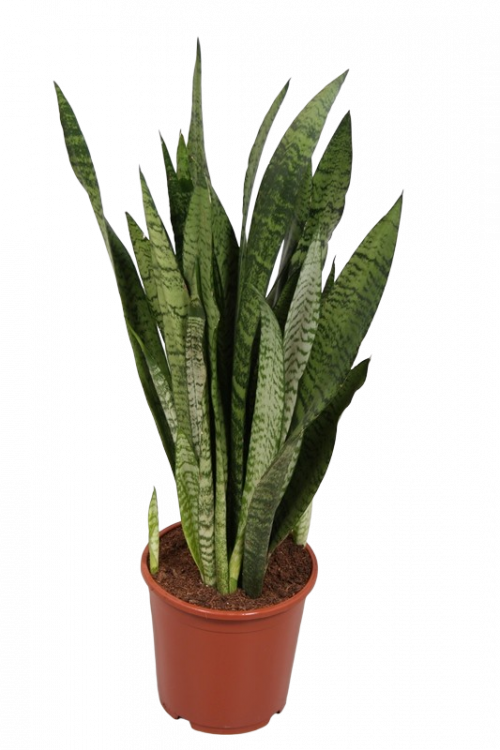 The Sanseveria zeylanica is almost indestructible and suitable for people who love separate modern forms. The Sanseveria is also an air-purifying plant and improves the humidity and creates a healthy atmosphere for body and soul. ~ 50 cm in height
The Sanseveria zeylanica is almost indestructible and suitable for people who love separate modern forms. The Sanseveria is also an air-purifying plant and improves the humidity and creates a healthy atmosphere for body and soul. ~ 50 cm in height -
Out of stock
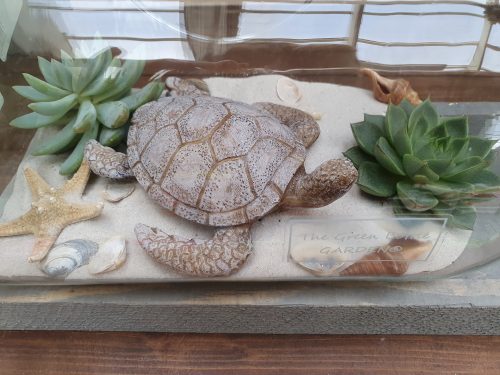
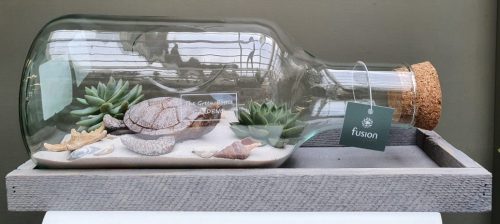
Inside a terrarium is a world of ideal peace. The cactus represents both strength and softness. The Terrarium is made entirely by hand by skilled artisans and will bring elegance and sophistication to your home, work or meditation space. It can be placed on a pedestal or as a centerpiece on a coffee table or side table. Cacti and succulents require very low maintenance making them ideal for anyone beginning to connect with plants.
Each plant is unique and will vary based on availability.
CARE INSTRUCTIONSPlace in bright indirect light, such as near a window or glass door. Make sure the arrangement is not direct sunlight as the rays of sun hitting glass acts as a magnifier and may burn the plants.
Start by watering once a month. Using a water bottle, spray each plant 3-5 times from the opening of the terrarium towards the soil (bottom) of the plants. Make sure the water spray evenly throughout the arrangement. Use a paper towel if necessary to clean the inside and outside glass. Let dry out completely between watering.
It is natural for each plant to have a different growth cycle. You may request a renovation service in our garden centre and can replace as many plants as necessary.
-
Out of stock
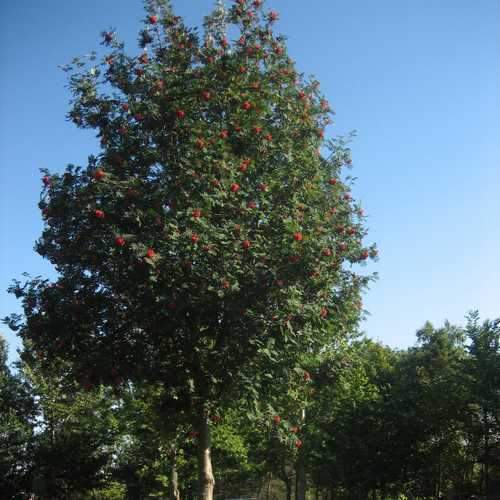
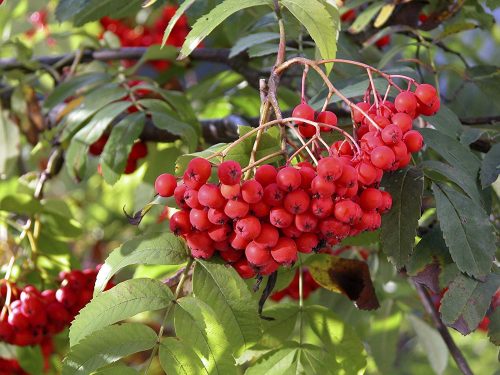 A cultivar of the native Irish rowan or mountain ash, Sorbus aucuparia ‘Sheerwater Seedling’ is a vigorous, medium-sized to tall tree of upright, narrow habit, the crown widening with maturity. It is often planted as a street tree. Creamy-white flowers appear in April–May, reliably followed by large clusters of long-lasting red berries in late summer. The leaves are grey-green, turning yellow and gold in autumn. A very easy, fast-growing, reliable tree, good for pollinators and birds. Plant in full sun for the best shape. Holds the RHS Award of Garden Merit. Site: Tolerates exposure Soil: Any reasonably well drained soil, acid to neutral soils preferred Position: Full sun Season of Interest: Spring, late summer, autumn Hardiness: Fully hardy Height: 40’ (12m) Spread: 13-26’ (4-8m)
A cultivar of the native Irish rowan or mountain ash, Sorbus aucuparia ‘Sheerwater Seedling’ is a vigorous, medium-sized to tall tree of upright, narrow habit, the crown widening with maturity. It is often planted as a street tree. Creamy-white flowers appear in April–May, reliably followed by large clusters of long-lasting red berries in late summer. The leaves are grey-green, turning yellow and gold in autumn. A very easy, fast-growing, reliable tree, good for pollinators and birds. Plant in full sun for the best shape. Holds the RHS Award of Garden Merit. Site: Tolerates exposure Soil: Any reasonably well drained soil, acid to neutral soils preferred Position: Full sun Season of Interest: Spring, late summer, autumn Hardiness: Fully hardy Height: 40’ (12m) Spread: 13-26’ (4-8m) -
Out of stock
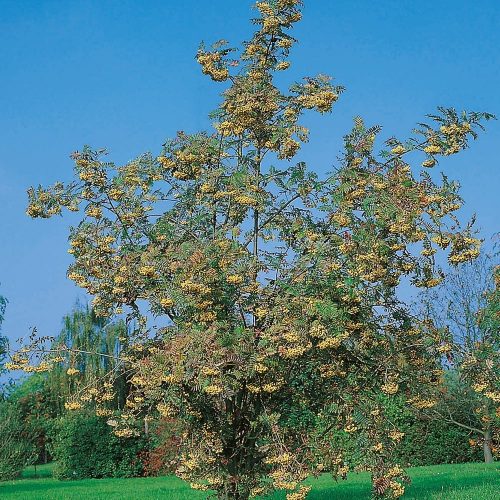
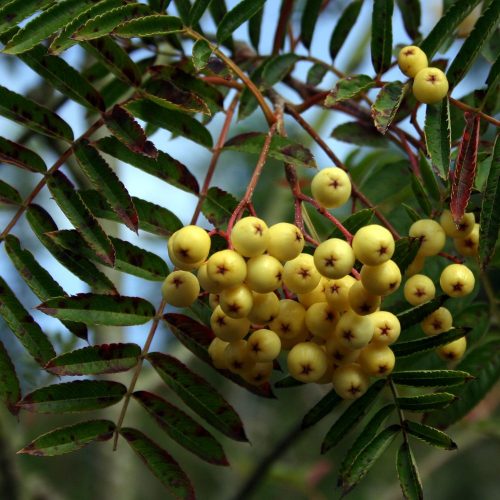 Sorbus Joseph Rock is a bright yellow-berried rowan tree very suitable for the small garden. It remains a great choice as a small tree for the small garden. A First-class tree with small, bright green leaflets that turn orange, purple and red in autumn. Clusters of white flowers appear in spring and are followed in autumn by small yellow berries, which birds love. It is an outstanding small tree which can tolerate a wide range of soils and conditions.
Sorbus Joseph Rock is a bright yellow-berried rowan tree very suitable for the small garden. It remains a great choice as a small tree for the small garden. A First-class tree with small, bright green leaflets that turn orange, purple and red in autumn. Clusters of white flowers appear in spring and are followed in autumn by small yellow berries, which birds love. It is an outstanding small tree which can tolerate a wide range of soils and conditions.- Max. Height & Spread: H-12m x S-8m
-
Out of stock
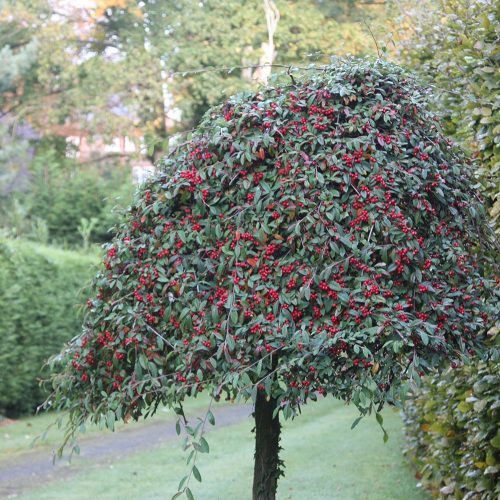
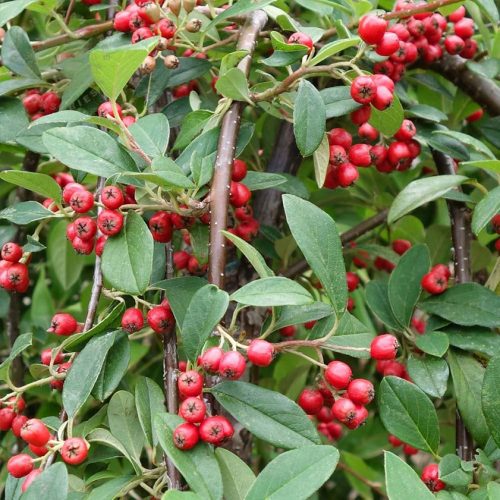 Cotoneaster Hybrida Pendula 'Hybridus Pendulus' is a vigorous prostrate evergreen shrub with large, elliptic leaves and small white flowers followed by profuse red berries in autumn; often top-grafted to form a pendulous small tree to 2m tall. CHARACTERISTICS: HARDINESS: Fully Hardy SOIL: moderately fertile, well-drained soil POSITION: Full Sun or Partial Shade FLOWERING PERIOD: June Fully Grown Height & Spread: 2m x 2m
Cotoneaster Hybrida Pendula 'Hybridus Pendulus' is a vigorous prostrate evergreen shrub with large, elliptic leaves and small white flowers followed by profuse red berries in autumn; often top-grafted to form a pendulous small tree to 2m tall. CHARACTERISTICS: HARDINESS: Fully Hardy SOIL: moderately fertile, well-drained soil POSITION: Full Sun or Partial Shade FLOWERING PERIOD: June Fully Grown Height & Spread: 2m x 2m -
Out of stock
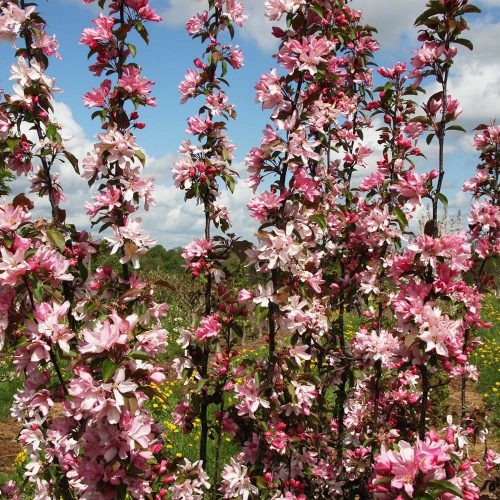
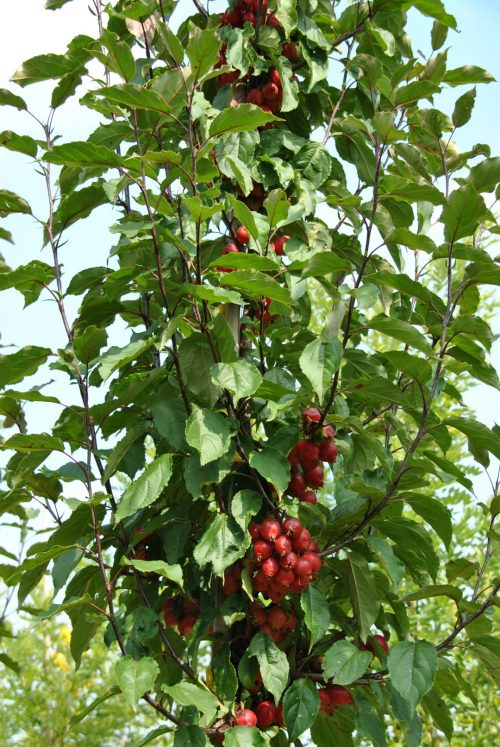 Malus 'Red Obelisk' Crab apple is a upright columnar tree that is perfect for small to medium sized gardens. Beautiful pinky white flowers in April & May with berries that follow in autumn. Plant Size • Mature Height: 3-4 metres • Mature Spread: 1-2 metres • Actual height 180-200cm • Pot size :10L Why We Love It • Fantastic amount of flowers in April and may. • massive amount of fruit in Autumn and winter. • bees land other wildlife love it. • Makes excellent jelly What To Know • Season of Interest: Spring, summer, autumn and winter interest • Position: Will do in sheltered or exposed sites. Likes full sun. • Soil: Moist but well drained, moderately fertile.
Malus 'Red Obelisk' Crab apple is a upright columnar tree that is perfect for small to medium sized gardens. Beautiful pinky white flowers in April & May with berries that follow in autumn. Plant Size • Mature Height: 3-4 metres • Mature Spread: 1-2 metres • Actual height 180-200cm • Pot size :10L Why We Love It • Fantastic amount of flowers in April and may. • massive amount of fruit in Autumn and winter. • bees land other wildlife love it. • Makes excellent jelly What To Know • Season of Interest: Spring, summer, autumn and winter interest • Position: Will do in sheltered or exposed sites. Likes full sun. • Soil: Moist but well drained, moderately fertile.